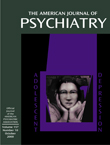Handbook of Assessment in Clinical Gerontology
When is a Handbook not a handbook?
A handbook can be carried comfortably “in the hand.” This 662-page tome is almost 2 inches thick and weighs 3 pounds. It will fit on a shelf, but not in a pocket.
A handbook is organized for quick reference with useful tables and graphs, chapter outlines and summaries, and a complete index, usefully cross-referenced. This book lacks a quick reference format. Tables are limited; they itemize the questions for some instruments but fail to provide the keys for scoring and interpretation. The table of contents lists only chapter headings. The index is merely adequate.
A handbook can offer a concise, coherent approach, with specific guidelines, liberal use of case material, and a rich sprinkling of “clinical pearls.” Alas, this volume uses 40 contributors (only one of whom is a physician, the majority having backgrounds in psychology) to present a comprehensive overview of 22 separate areas of clinical assessment. Clinical case material is used sparingly. Most chapters catalog all the available test materials without indicating preference, leaving the reader to judge which might be most useful. Guidelines are the exception, and “clinical pearls” are as scarce as real ones.
Some chapters are excellent. Zeiss, Zeiss, and Davis present a detailed, practical approach to the assessment of sexual function and dysfunction in the elderly. Cohen-Mansfield and Martin provide a useful discussion of agitation in this age group. Camp, Koss, and Judge put forward a new and arguably better assessment tool for late-stage dementia, avoiding the survey approach of most contributors. Moye’s presentation of the definitions and steps needed to assess legal competency, including a glossary of terms relating to guardianship, brings clarity to a difficult area of clinical practice. In the final chapter, Haley and Mangum go beyond what they call “the technology of geriatric assessment” to review the ethical issues that arise when clinicians confront older patients with disabilities that can limit their rights and freedom.
In spite of these excellent contributions, this reference work—with its scholarly format, its sometimes turgid sentence structure, and its extensive documentation—is not a handbook but a textbook.
As a textbook, it addresses an important topic with admirable thoroughness. Our population is aging, and the number of elderly will balloon when the “baby boomers” enter this phase of their lives. They will need an unprecedented volume of health care resources, and the types of assessment procedures reviewed in this hefty compilation of expert viewpoints will be needed even more than they are today.



